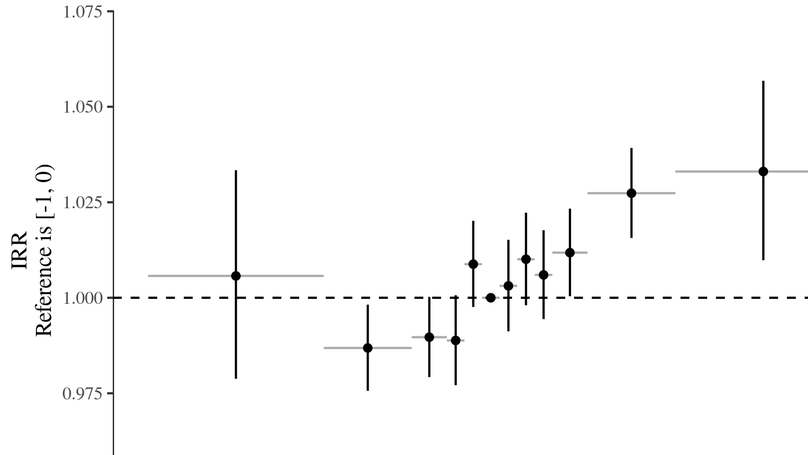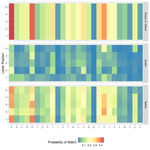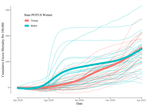Jacob Simmering is an assistant professor in the Division of Pulmonary, Critical Care, and Occupational Medicine at the University of Iowa. My graduate school training was a mixture of epidemiology, health economics, and statistical methods and current areas of active research include the effects of the environment, especially weather and pollution, on health outcomes and pharmacoepidemiology and neurodegenerative diseases.
My non-research interests include wondering about the effects of the built environment in cities, biking, reading, his toddler, doomscrolling on Twitter, and saying that I’ll someday learn Julia.
- Administrative health care data
- Environmental effects on health
- Neurodegenerative diseases
- Putting more miles on his bike than car
PhD in Health Services Research, 2016
University of Iowa College of Pharmacy
MS in Epidemiology, 2009
University of Iowa College of Public Health
BA in Chemistry, 2009
Grinnell College
Recent Posts
Featured Publications

Importance: Acute appendicitis is a common cause of abdominal pain and the most common reason for emergency surgery in several countries. Increased cases during summer months have been reported.
Objective: To investigate the incidence of acute appendicitis by considering local temperature patterns in geographic regions with different climate over several years.
Design, Setting, and Participants: This cohort study used insurance claims data from the MarketScan Commercial Claims and Encounters Database and the Medicare Supplemental and Coordination of Benefits Database from January 1, 2001, to December 31, 2017. The cohort included individuals at risk for appendicitis who were enrolled in US insurance plans that contribute data to the MarketScan databases. Cases of appendicitis in the inpatient, outpatient, and emergency department settings were identified using International Classification of Diseases, Ninth Revision, Clinical Modification or International Statistical Classification of Diseases, Tenth Revision, Clinical Modification diagnosis codes. Local weather data were obtained for individuals living in a metropolitan statistical area (MSA) from the Integrated Surface Database. Associations were characterized using a fixed-effects generalized linear model based on a negative binomial distribution. The model was adjusted for age, sex, and day of week and included fixed effects for year and MSA. The generalized linear model was fit with a piecewise linear model by searching each 0.56 °C in temperature for change points. To further isolate the role of temperature, observed temperature was replaced with the expected temperature and the deviation of the observed temperature from the expected temperature for a given city on a given day of year. Data were analyzed from October 1, 2021, to July 31, 2022.
Main Outcomes and Measures: The primary outcome was the daily number of appendicitis cases in a given city stratified by age and sex, with mean temperature in the MSA over the previous 7 days as the independent variable.
Results: A total of 450 723 744 person-years at risk and 689 917 patients with appendicitis (mean (SD) age, 35 (18) years; 347 473 male (50.4%) individuals) were included. Every 5.56 °C increase in temperature was associated with a 1.3% increase in the incidence of appendicitis (incidence rate ratio (IRR), 1.01; 95% CI, 1.01-1.02) when temperatures were 10.56 °C or lower and a 2.9% increase in incidence (IRR, 1.03; 95% CI, 1.03-1.03) for temperatures higher than 10.56 °C. In terms of temperature deviations, a higher-than-expected temperature increase greater than 5.56 °C was associated with a 3.3% (95% CI, 1.0%-5.7%) increase in the incidence of appendicitis compared with days with near-0 deviations.
Conclusions and Relevance: Results of this cohort study observed seasonality in the incidence of appendicitis and found an association between increased incidence and warmer weather. These results could help elucidate the mechanism of appendicitis.
Recent Publications
Contact
- jacob@jacobsimmering.com
- 169 Newton Rd., Iowa City, IA 52242
- DM Me
Expert
Solid Start
Enough to Be Dangerous
At least 30
4 Years Since Last Road Rash
Many years experience


